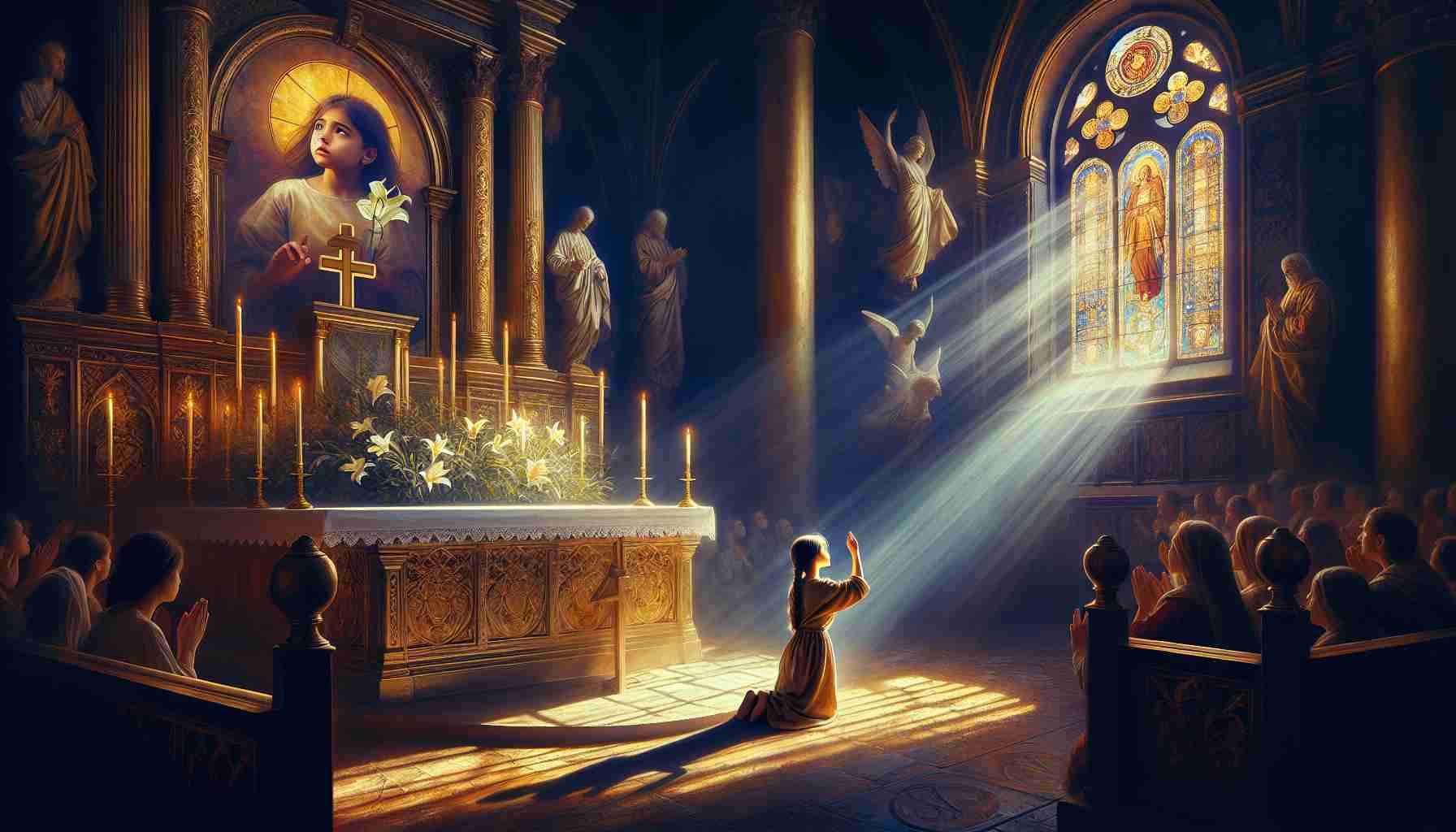

The bells of Rouen tolled like a death knell against the gray May morning. Smoke curled into the sky from the square where the flames had long since died, leaving only ash and whispers. In the dim recesses of Saint Joan’s chapel, light filtered through stained glass, bathing the stone floor in hues of crimson and gold—a warrior’s colors. The faint scent of incense lingered beneath the soot-stained air, a relic of hurried prayers whispered the night before.
It had been nearly five hundred years since the girl in armor burned for heresy. And yet, on May 16, 1920, her name was carved into the sanctum of the saints.
She had once been only a shepherdess, born among fields and frost in Domrémy, Normandy—unknown and unseen, save for the eyes of heaven. Though her hands had once cradled lambs, it was the rough handle of a sword she came to bear. How strange, how divine, that the One who "lifted the lowly" (Luke 1:52) should anoint a peasant girl to shape the fate of kings.
As the Vatican bells pealed across Rome that morning, a few who had fought to keep her name alive wept in the shadows of cathedrals. The Pontiff's voice echoed through the throngs gathered in Saint Peter’s, pronouncing her sanctity as if it were an open secret finally confessed to the world. Pope Benedict XV called her canonization “the triumph of justice over the errors of men.”
But France had already been whispering her sainthood long before holy oil touched her name. In stone chapels and war-torn houses, her story lived—how a girl claimed to hear voices, saints who summoned her to lift the siege on Orléans. How she rode in armor not as a queen, but as divine thunder. How she crowned a king and was later abandoned by kings. Captured, chained, mocked, but still unshaken. It was not merely her victories they remembered—it was her fire.
In the hushed libraries of Rouen Cathedral, yellowed manuscripts still kept her story. Monks had copied, with shaking hands and ink-stained robes, the account of her trial: a court rigged by politics, hungry for spectacle. Accused not for war, but for a soldier’s tunic and sacred conviction. She wore men’s clothes and claimed God’s voice—both sins under earthly law.
Yet it was that same voice—Michael the Archangel, Saint Margaret, Saint Catherine—that stirred armies, turned tides, and refused to be silenced.
When the executioners tied her to the stake in the marketplace of Rouen, charcoal and wood soaked in pitch beneath her bare feet, a hush fell upon even the most hardened among the crowd. Witnesses swore her eyes never faltered. Nor did her faith. She cried the name of Christ until the flames reached her lips. Afterward, only her heart remained unburned—so claimed the bailiff, trembling before the miraculous.
Centuries later, those ashes gave way to gold. Tourists and pilgrims now crowded the site where she once fell, near the ruins of the Old Market Church. A new chapel rose like defiance from the soil, its spires twisting like tongues of fire. Stained glass poured down light in a thousand colors, each one telling a word of her story. Artists had shaped her visage in stone—a girl armored in light, sword raised not in aggression, but in unyielding faith.
Yet some still questioned. Historians debated whether her visions were divine or delusion. Skeptics questioned the nature of saints, of miracles. And in old city taverns, old men sipped wine and shrugged, “She was just a girl.”
But perhaps that was the point.
In Bethlehem, a child had once lain in straw while angels sang. In Gethsemane, a man had wept until his sweat was like blood. The Almighty had wrapped divinity in flesh, choosing stables instead of thrones, fishermen instead of scholars. Why not then a maiden with callused hands and battlefield eyes?
The Lord had cast down rulers from their thrones and lifted up the humble (Luke 1:52). And now the statues carved of saints bore a woman forgotten by courts, betrayed by politics, yet never forgotten by heaven.
At night, the plaza in Rouen emptied. The echo of footsteps faded. But in the stillness, it was easy to imagine the sound of hooves on cobblestones, the flash of steel, the soft murmur of prayer rising above the clash. The girl who said yes to heaven still rode through legend.
Not even fire had silenced her. Her canonization was not merely a coronation, but a vindication.
A peasant girl became a saint that day.
And her flame never went out.